Texas Sage, Compact Texas Ranger, Texas Barometer Bush, Silverado Sage, Texas Silverado, Cenizo, Senisa, Purple Sage, Texas Silverleaf, Texas Rain Sage, Ash-bush, Wild Lilac, Cenicilla, Palo Cenizo
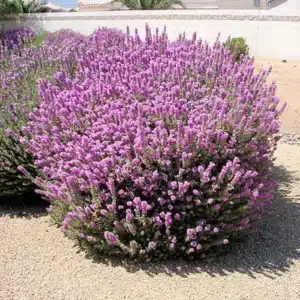
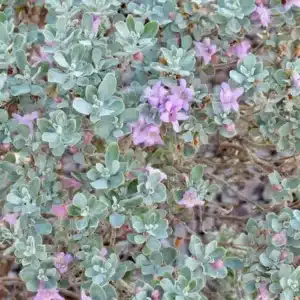
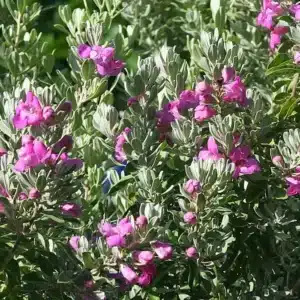
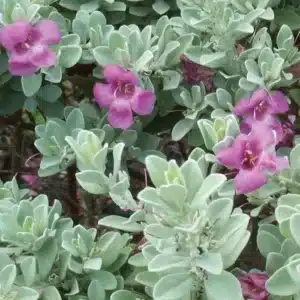
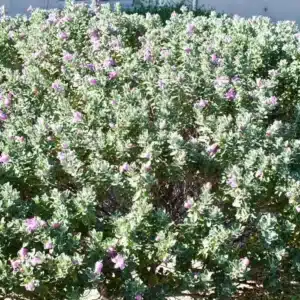
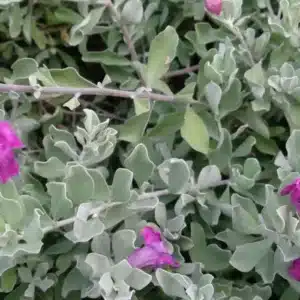
Texas Sage is ideal for xeriscapes, mass plantings, screen or foundation plantings, and even patio containers, providing a spectacular array of profuse purple, magenta, pink or white blooms against a lovely backdrop of velvety silver leaves. Native to Texas and Mexico, this native shrub will mature to a height and spread of about 8 feet. Texas Sage blooms summer through fall and is hardy to USDA zones 8-10. This plant is also referred to as ‘Texas Rain Sage’ due to abundant blooming periods that seem to be activated by rain showers.
Texas Sage thrives with full sun (6-8 hours daily) and must be planted into soil with excellent drainage. Plants should be spaced about 3 feet apart. This plant is not picky about soil type, and it is not necessary to add organic matter at the time of planting. The recommended method of propagation for Texas Sage is from soft wood cuttings taken in late summer. The cuttings should be about 4 inches in length, and stripped of all but the topmost leaves. The lower end of the cutting should be dipped into rooting hormone powder and then pressed into moist growing medium until roots form. Texas Sage may also propagated by seed pressed into moist soil and left uncovered. Seedlings appear in about one month.
Texas Sage requires very little maintenance. Once established, the plant responds well to monthly irrigation, but the soil must be allowed to dry out completely between each watering. Texas Sage is highly susceptible to root rot if the soil remains excessively moist.
Texas sage does not require fertilizer. You may add organic mulch around the plant base to gradually release nutrients, avoid high nitrogen sources (such as grass clippings).
Minimal pruning can be accomplished once a year in late winter if the plant begins to get leggy, with a more extensive pruning every 5 years to maintain appearance.
Texas Sage is not affected by insects or disease. However, excessively moist soil may contribute to root rot. If provided with excellent soil drainage, root rot is preventable.














